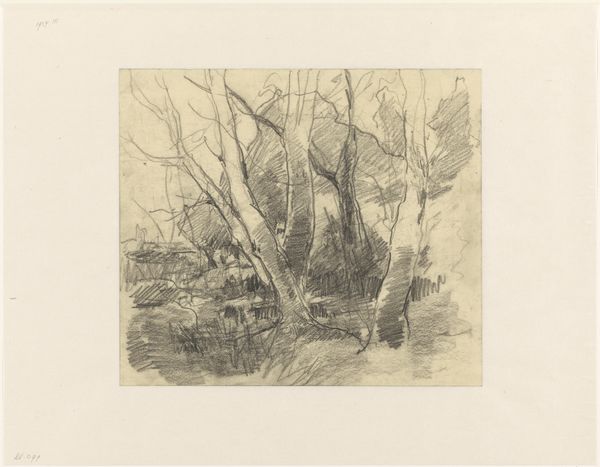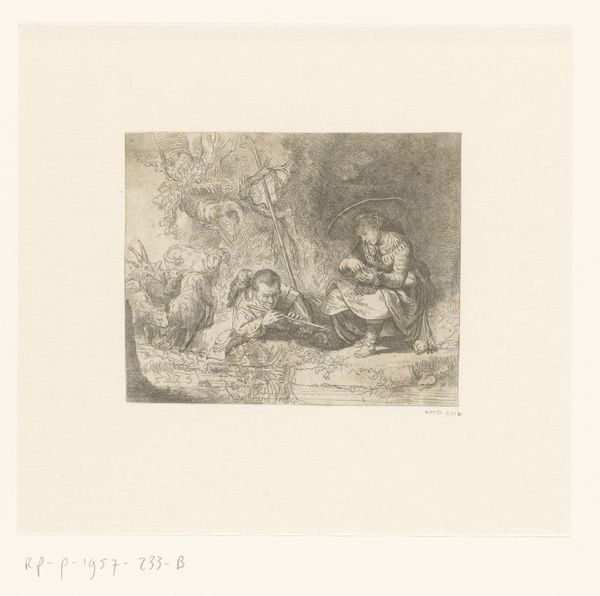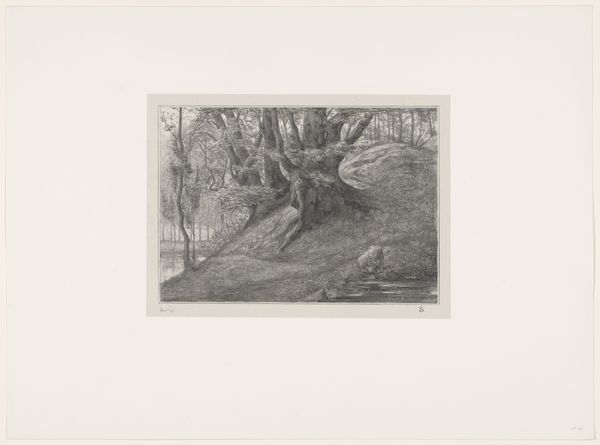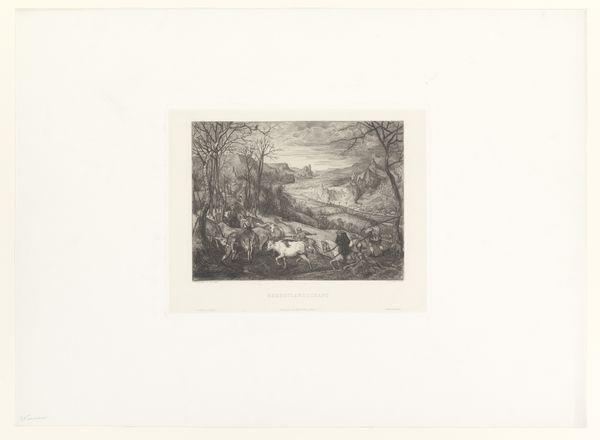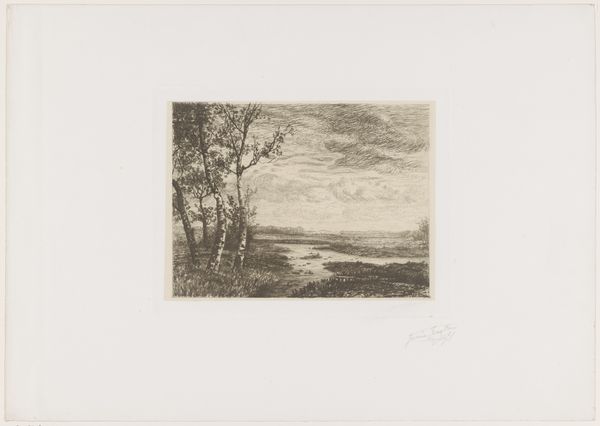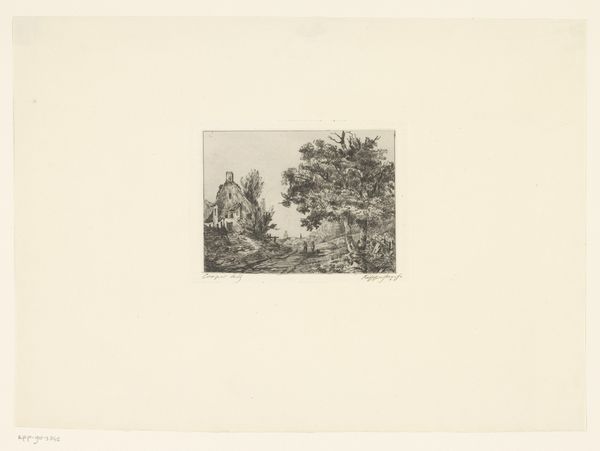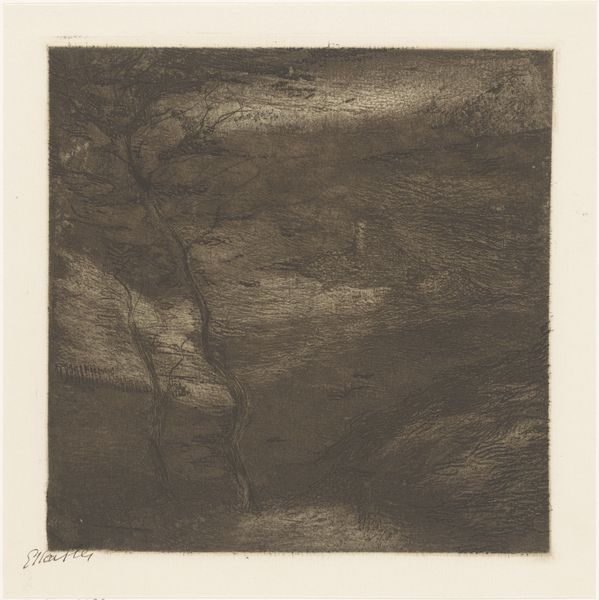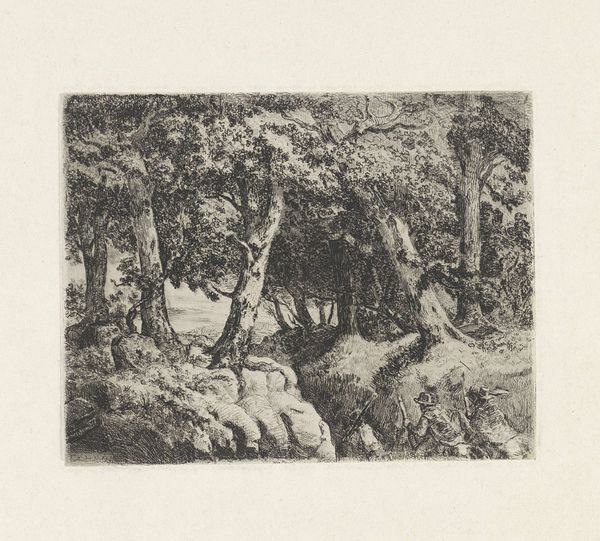
drawing, print, etching
#
drawing
#
light pencil work
# print
#
etching
#
pencil sketch
#
landscape
#
pencil work
#
realism
Dimensions: height 81 mm, width 107 mm
Copyright: Rijks Museum: Open Domain
Léopold Flameng's etching presents us with a seemingly simple scene of a bull in a field, but the image resonates with a far deeper cultural history. The figure of the bull, charged with potent symbolism across millennia, immediately draws our attention. We can trace it back to ancient Minoan culture, where it represented power and virility, and where bull-leaping rituals were testaments to human bravery and skill. The bull is also ever-present in the myth of Europa, abducted by Zeus in bovine form. In these ancient contexts, the bull embodied both the sacred and the profane. Now, consider how this symbol has transformed: from divine representation to a pastoral scene. Yet, the emotional undercurrent remains. The bull, even in repose, engages our subconscious, a reminder of primeval forces tamed, but never entirely subdued. This echoes the cyclical nature of symbols, resurfacing and evolving through history.
Comments
No comments
Be the first to comment and join the conversation on the ultimate creative platform.

